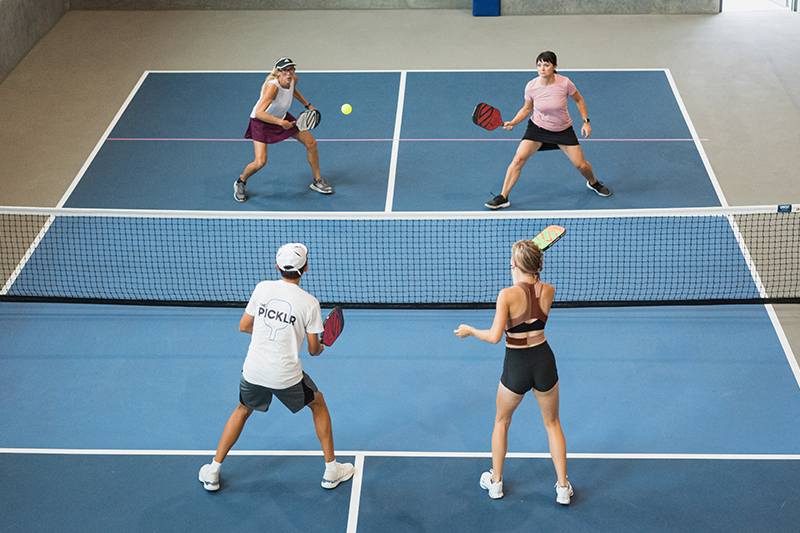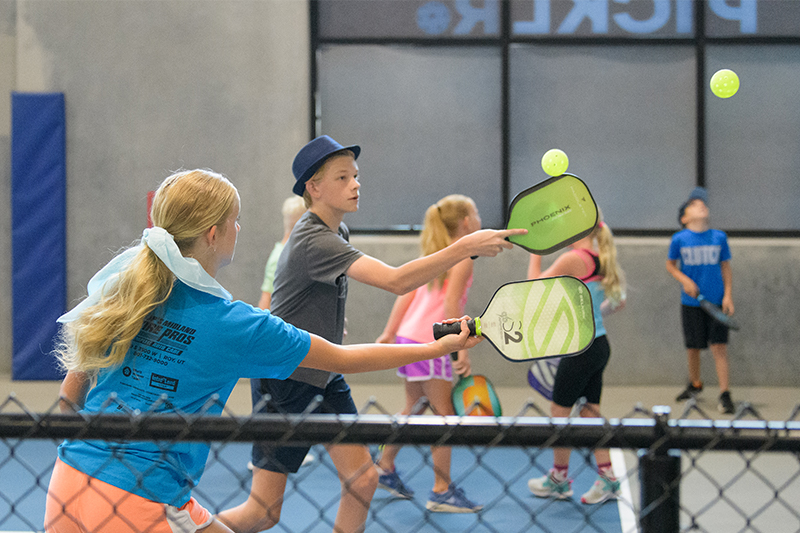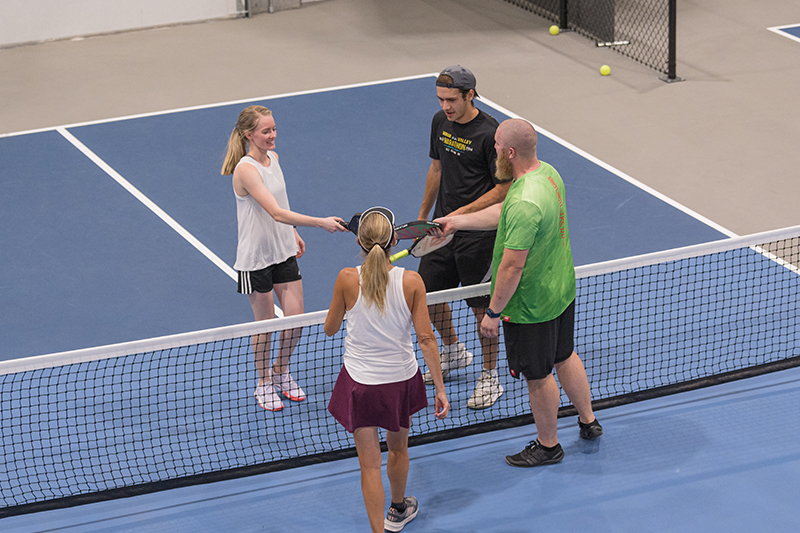ProductVenmo
If you’ve heard about pickleball, chances are you have some questions – like what exactly is the “kitchen” or “dinking”? And where do the pickles come in? (Spoiler: they don’t.)
The sport is growing in popularity, in part simply because it’s fun. That’s what got Jorge Barragan, co-founder of The Picklr in Uintah, Utah, hooked. After lunchtime play became a habit, he turned his passion for the sport into a full-time job, opening an indoor pickleball club that’s now home to a community of people who love the sport as much as he does.
To build that community, Jorge took advantage of setting up a Venmo Business Profile. It helps the club get discovered by people scrolling through Venmo and seeing their friends frequenting The Picklr. In under a year, the club has drawn in all kinds of players – young, old, people new to the sport and those training to play competitively.

Smaller than a tennis court, every pickleball court also has a no-volley zone, known as “the kitchen”
Once in the door, quick payments through Venmo make it easy get playing right away. Getting into the game from there is pretty simple.
“For a beginner wanting to learn to play pickleball, it's a very accessible game,” Jorge said. “You can buy inexpensive paddles. All you need is a ball. You can find courts locally around you. And so, it's a very inclusive and accessible sport to be able to play if you're a beginner and get into it immediately.”
From the court to some of the offbeat terms, here are a few things to know about pickleball.
Pickleball basics: Where you play and what you need
The court: A pickleball court is the size of a badminton court (smaller than a tennis court and with a lower net). Under USA Pickleball rules, total playing surface is a minimum of 30 feet by 60 feet (34 feet by 64 feet is preferred). The actual playing lines are 20 feet by 44 feet. Indoor and outdoor pickleball court surfaces are usually asphalt or concrete. Some courts will also have cushioned surfaces added for better shock absorption, which helps protect players’ joints without affecting the ball’s bounce. You can also play on wood or rubber flooring, like you’d find in many indoor gyms.
The “kitchen”: Every court has what’s known as “the kitchen”: a seven-foot no-volley zone on either side of the net. When a player serves, it has to clear the kitchen and land diagonally on the other side of the court. Players must then let the ball bounce once before volleying is allowed.

Younger players show off pickleball paddles, larger than those for ping-ping but smaller than tennis racquets
Equipment: When it comes to equipment, the sport is pretty simple. Pickleball paddles are larger than ones used for ping-pong but smaller than tennis racquets. They’re usually made from lightweight material like aluminum or graphite. A pickleball itself is easy to spot because of its distinctive holes but otherwise, they can come in a variety of colors. Some are made for indoor courts and others are designed for outdoor play.
How do you win?
A pickleball game is played in either singles or doubles, with some variations in the rules and scoring for each. Only the serving side scores points. The first side to score 11 points and lead by at least two points wins.
“There are a lot of quirks to the game, but also the names that are associated with it,” Jorge said. “When you're getting the ball over the net softly, that's called dinking.”
It’s a term to remember (and skill to develop) if you want to win. A dink – a soft shot executed from one side’s kitchen that lands in the other side’s – makes for a tough return. Dinks that are close to the net are hardest for the other side to hit back.

Jorge Barragan, The Picklr co-founder, shows that pickleball takes practice
While pickleball is easy to get into, it still puts players to the test. “It looks simple, but it's pretty difficult actually to get really good,” said Preston Niederhauser, a member at The Picklr. “I love pickleball because I can play for an hour, and I can get a great workout. It's difficult to execute good shots and it requires a lot of practice.”
What’s up with the name?
“Kitchen” and “dinking” aside, pickleball itself is a pretty weird name – enough so that it’s even a bit of draw. “My neighbor actually invited me to play, and I love pickles and I thought ‘who would name a sport pickleball?’ I got to go check it out,” said Michelle Summerhays, now a regular at The Picklr.
How the sport got its unusual name is up for debate. Three friends, Joel Pritchard, Bill Bell and Barney McCallum, created the sport in the summer of 1965, according to USA Pickleball. Pritchard’s wife Joan apparently came up with the name pickleball as a reference to “pickle boats” – a term used in boating for a thrown-together group of rowers. However, neighbors suggested it was really named for their dog, Pickles, but the Pritchard family maintains the dog joined the household later.
It’s a ‘game for a lifetime’
“A lot of people play, all age groups. I’ve been whipped by 60-year-olds,” Preston said.

People of all ages can – and do – get into pickleball
That’s one reason Jorge sees pickleball easily overtaking other sports soon, and even becoming the new “networking sport” over tennis and golf. He’s using youth clinics and tournaments at The Picklr to get even more young people involved in the sport, so it can keep growing in popularity.
And regardless of your age when you get into it, it’s a sport that grows with you.
“That's one of the best things, is that it is inclusive,” Michelle said. “It's a game for a lifetime. I am expecting to play it for a lot of years – and competitively.”